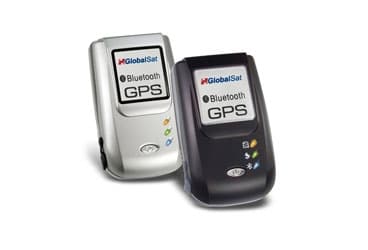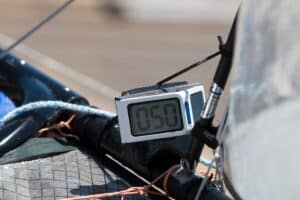
GUBluetoothSt
My career as a delivery crew/skipper and raceboat navigator began in the days of LORAN, taffrail logs, the aptly named “dead reckoning,” and sextants. Since then, affordable, accurate GPS units have changed the face of navigation, and unlike some grizzled diehards, I’ve welcomed the convenience wholeheartedly since I delivered a boat in the 1980s that came equipped with the brick-like Magellan 5000, one of the first handheld GPS units. My only complaint about the digital revolution is the amount of wiring required in today’s nav stations, even if they’re as basic as a laptop and a handheld GPS.I’m a Mac user, but because 99 percent of navigation and all tactical software is Windows-based, I dedicate a three-year-old Toshiba laptop to programs like Nobeltec’s Admiral, MaxSea, and Maptech’s Chart Navigator Pro. For tactical software I’m running the latest version of Expedition, which also works well for navigation. On my Mac laptop, I run the superlative navigation program MacENC. Sadly, there are no tactical software programs that run on the Mac OS, and considering the lopsided Windows/Mac ratio, I don’t see anybody writing any soon.In the past, integrating these programs with GPS required that I carried my Garmin handheld GPSMap76 and a mares’ nest of cables. First, there was the cable to connect the Garmin to the laptops. Then, since neither laptop came with a RS-232 serial port, I needed an RS-232 end to USB converter. If I was working down below, I needed to attach a remote antenna to the GPS, and if I was planning to use the GPS longer than 10 hours or so, I’d need a power cable. Thanks to the Globalsat BT-338, my days of explaining clumps of wiring at TSA checkpoints could be over. This Bluetooth-enabled GPS receiver has only one wire (used to charge the Lithium-Ion battery) and easily integrates with all my navigation and tactical software.In case you’re not familiar with Bluetooth, it’s a wireless technology used for short-range communications systems, transmitting over the Industrial, Scientific, and Medical radio band. ISM is the wild west of the radio spectrum- unlicensed in the United States, shared by such disparate technologies as microwave ovens, cordless home telephones, and computer wireless networks. Transmitting at 2450 megahertz (aka 2.4GHz), Bluetooth occupies its own chunk of the ISM spectrum, which means it shouldn’t cause or receive interference. Bluetooth is omnidirectional, can send and receive through solid objects, carry for a distance of between 10 to 100 meters (depending upon the device), and transmit at a maximum rate of three megabits per second, which makes it perfect for GPS data streams. What’s best about Bluetooth is the cost of the hardware-about three dollars a unit-which means that for computer, cellphone, and GPS manufacturers, it’s a low-cost, high-value feature to add. Those little earpieces everyone wears? Bluetooth-connected to a cellphone. You probably own two or three Bluetooth-enabled devices and don’t know it, as many manufacturers include them in laptops and cellphones at no charge. If you don’t already have Bluetooth on your laptop, you can find USB Bluetooth transmitter/receivers from about $10 on up.Within ten minutes of opening the Globalsat box and turning on the BT-338 GPS, I was receiving a strong, clear position signal in MacENC running on my Mac twenty feet away. With my Windows laptop setup took a little longer, but once I’d instructed my various programs exactly where to look for the incoming data, it worked fine as well. Globalsat offers six Bluetooth models, none of which are marinized, but given the low cost of both Bluetooth modules and GPS chipsets, and the convenience of unwired GPS receivers, I’m sure we’ll soon see units aimed specifically at the marine market. Online, prices for the Globalsat’s BT-338 vary between $80 and $200.









